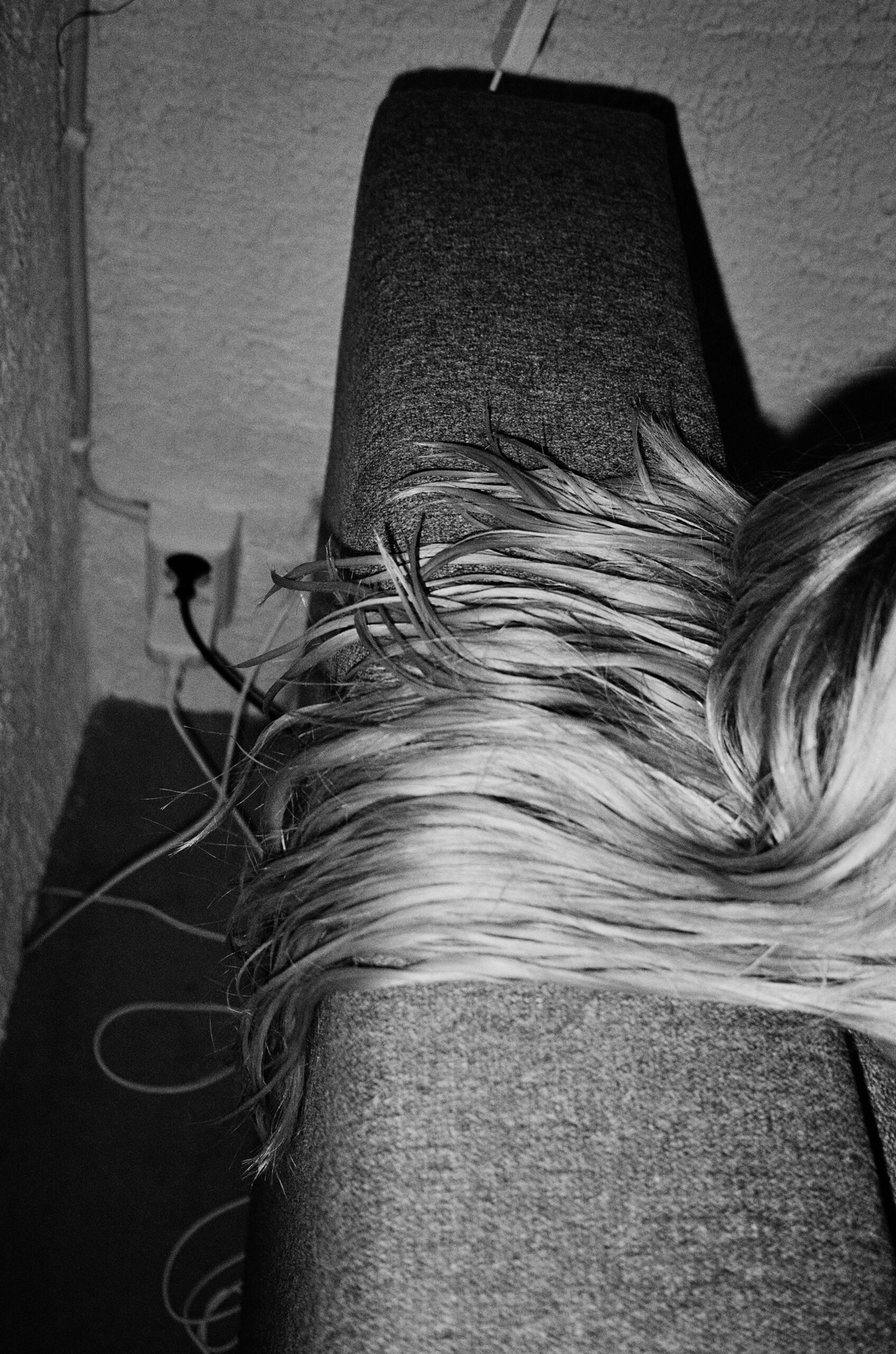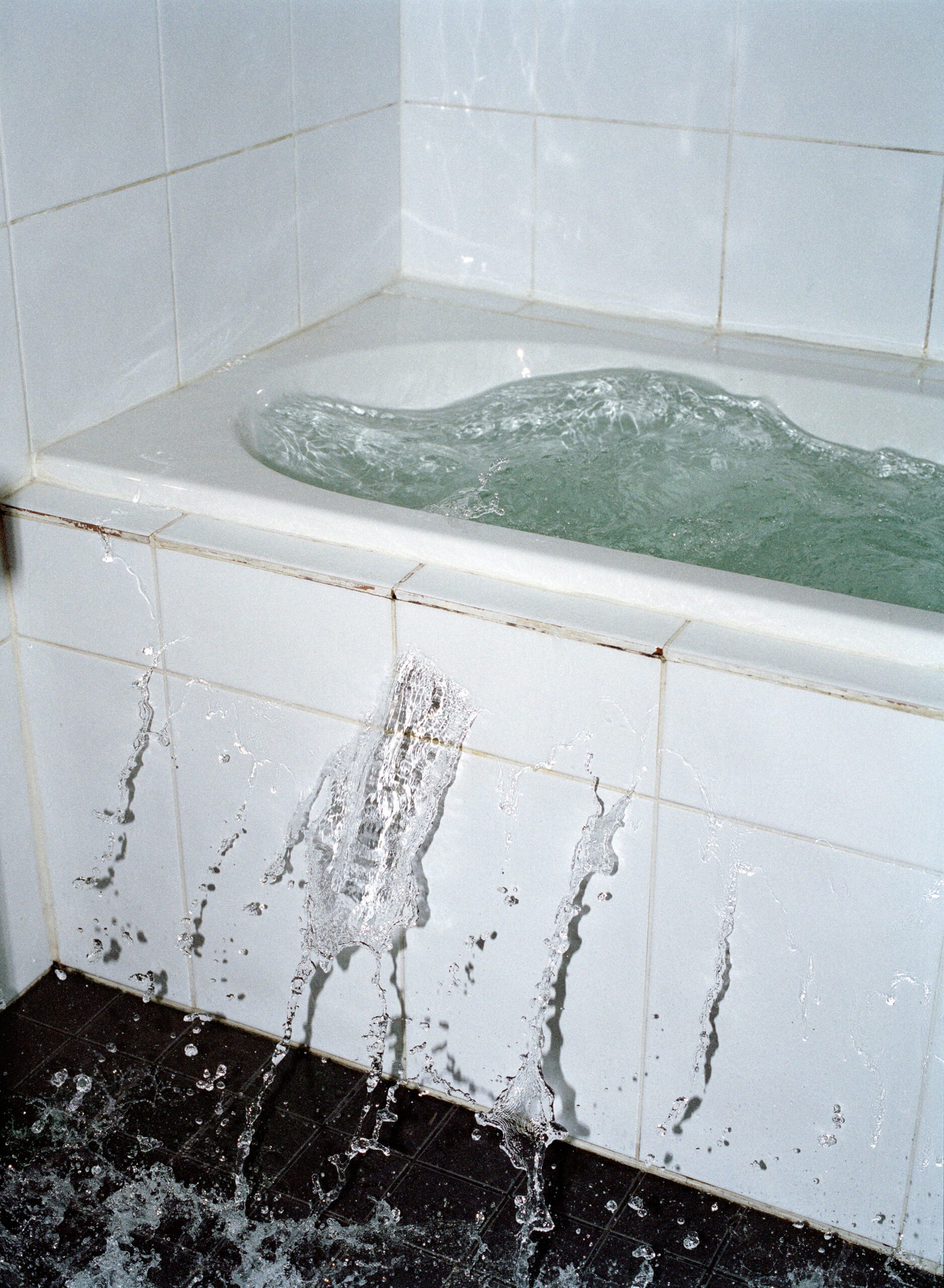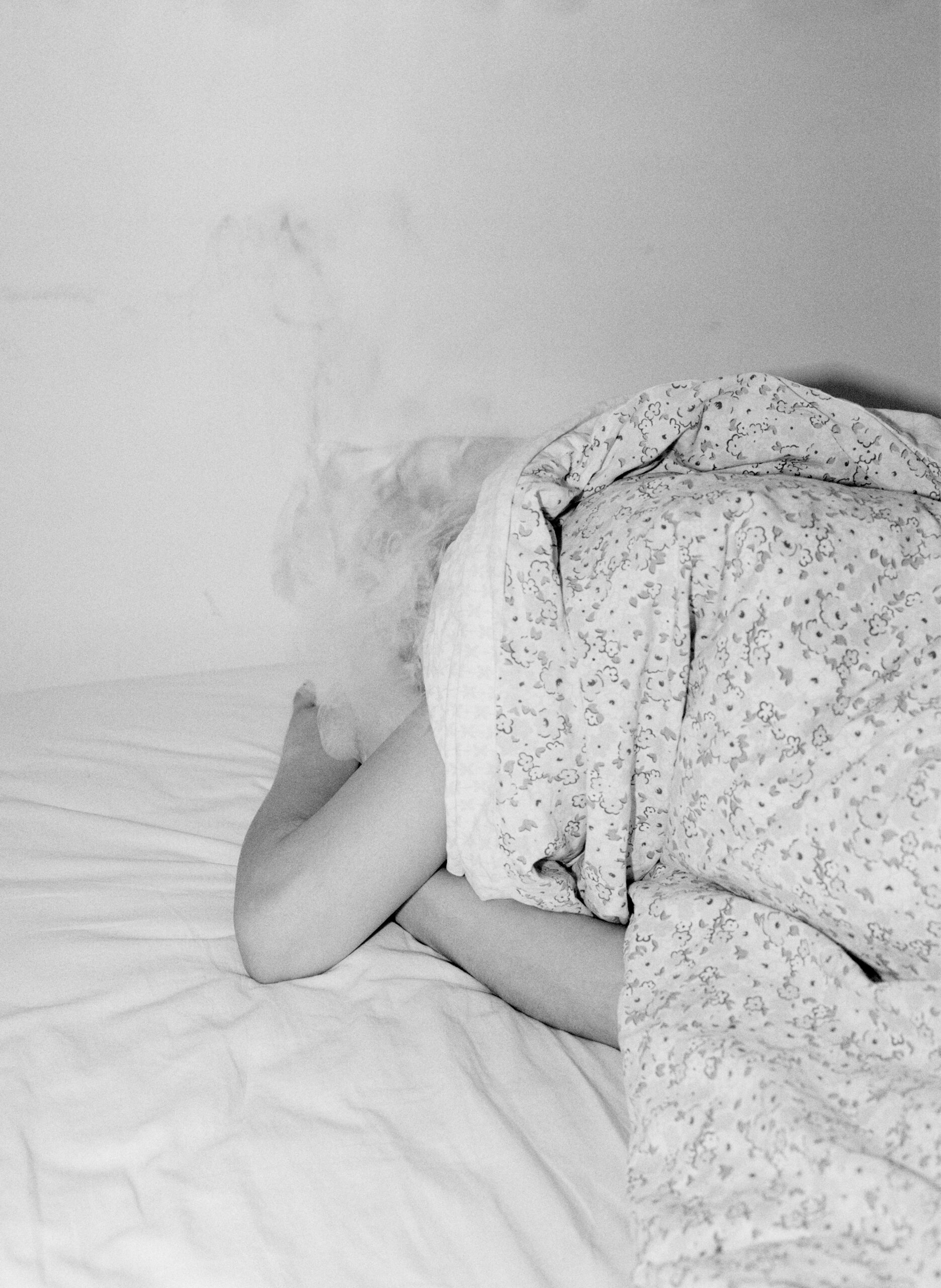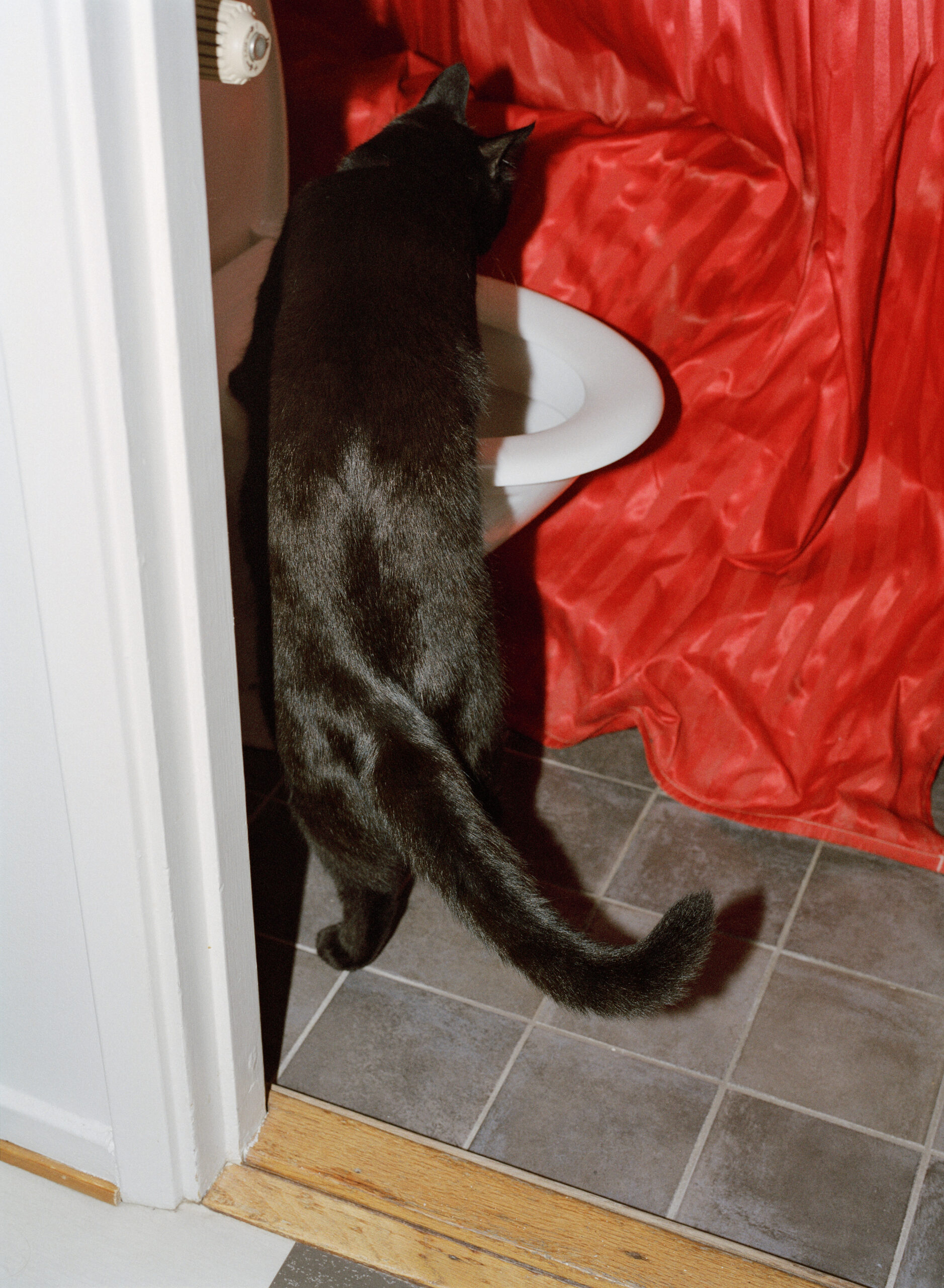




To Photograph a Black Cat Is to See What Can’t Be Looked At

I photograph within the walls of my home. As I perceive the space I see nothing I haven’t seen before. I look, I move an object from one place to another, but nothing appears to be particularly out of the ordinary. It is only when the material environment transfers into a photographic image that the room seizes to inhabit its recognizable character. Only then does the unfamiliar filter in.
As I open the door to the corridor the black cat enters my apartment confidently. He knows he is allowed to, we’re old acquaintances, the black cat and I. The black cat has been here before, yet he performs his routine of inspecting the apartment thoroughly. I observe. The black cat sees me observe, he meets my gaze. We look at each other, the black cat and I. The black cat lets me run my palm against his silky fur, and in response, he rounds his spine against my fingers. The black cat wanders through the hallway, the black cat lays down to claw the carpet. The black cat raises his tail upward, curling it at the end. The black cat behaves like a cat does. The black cat jumps on the bed, he smells the sheets, places his steps judiciously, the black cat moves away and the black cat reappears. The black cat squeezes himself in between the sofa and the wall. I observe the black cat and he sees me observe him. The black cat observes me.
The photograph of the black cat exists in between the familiar and the unfamiliar. By this I mean that the photograph is a physical imprint of something I have seen before, while it simultaneously allows me to access an unfamiliar perception of the very same subject. There is something inherently uncanny about photographic images. The term uncanny, first introduced by Sigmund Freud, signifies the simultaneous appearance of the familiar and the unfamiliar. It implies the strange or the mysterious that occurs within a familiar context. A photograph is a recollection of the familiar, however it also hints at realms beyond our immediate perception. It’s this duality that renders photographic images uncanny. A photograph is a mere reflection of the real, and it is something other than.
The black cat pushes the bathroom door open, the black cat enters in. I follow him, I stand in the doorway. We are by the bathroom, the black cat and I. It’s dark, I can’t perceive the room in detail. However, I presume the black cat can. The black cat stretches his body against the toilet seat. The black cat bends his head over the edge of the toilet seat to see inside, but I can’t say for sure, for I can’t see clearly. The black cat tilts his head to the right, but I don’t see him doing so.
The possibility of the photographic uncanny is embedded in every situation. The situation passes, but the photographic image of the very situation remains. A context is exhausted from a photograph, and as a consequence, a possibility for another kind of contextuality is being established. A photograph is a fragment of a whole, and it is an entirety in itself. By confining itself, a photograph allows for another reality to emerge. By eliminating the information that persists outside of the image area, a photograph enables us to see more clearly. Rather, it conceals all the while it brings forth information novel to us.
The situation has passed, but the photographic image of the very situation remains. A photograph of the black cat in the bathroom. I, looking at the photograph of the black cat in the bathroom. I can see the dim bathroom is forcibly being lit by the use of flash. The light is stark, it has been forced upon the privacy of the dark room. The room is exposed. The light penetrates the space and unveils what would otherwise remain invisible or undetectable. Now I can perceive the room in detail, I can see what the black cat has presumably seen. But as much as the flash exposes and enables me to see more, it also obscures. The familiar bathroom is now partly unrecognizable and as Benjamin suggests, the technological apparatus enables us to perceive the imperceptible. The bathroom in the photograph is not the one that I’m familiar with. The bathroom belongs to the black cat.
Not knowing is precarious, it daunts me, it daunts most of us. I lie awake, speculating on alternative explanations, possible courses of events, and cause-and-effect relationships. But besides that, or maybe precisely because of it, I’d like to think that the discomfort that arises from the place of not knowing might also be accompanied by a sense of gratification, even enjoyment. The unknown may allow an exit from everyday relations. It may arouse a pleasure of the unsettling and the wondrous. Besides, if the notion of the unfamiliar that underlies all photographic images could be fully known, it would cease to exist. Not knowing is the prior objective, for images refuse to be rationally construed. Susan Sontag famously probes the notion of nonverbal information embedded within photographic images that demand to be met by means other than logical reasoning:
The ultimate wisdom of the photographic image is to say: “There is the surface. Now think—or rather feel, intuit—what is beyond it, what the reality must be like if it looks this way.” Photographs, which cannot themselves explain anything, are inexhaustible invitations to deduction, speculation, and fantasy.
The red curtain behind the black cat is inanimate and still. I see the red curtain regularly, I cover myself with it. I pull it in front and I pull it behind, but now the red curtain pulls me in, and it pulls me back, it moves me in a wave motion. In the photograph, the red curtain looks the same as always, but it was never so red before.
Once the photograph exists, I’m unable to differentiate between the notion of recognizability and foreignness within the image. I identify the black cat, and I identify the bathroom, however they seem unfamiliar to me. The photograph veils the familiar. I find it challenging to distinguish the factor that removes the photographic image from the familiar realm because those very same factors also evoke a sense of recognition.
Photographs are imitating physical reality, while simultaneously contesting it. They allow for the coincidental appearance of the real and the imagined. Rather, they insist on it. To me, photography is a vehicle that initiates a process of accessing another register of perceiving. It mediates an experience that goes beyond simply viewing an image, but rather, establishes a presence that extends over our perception of reality. The image forces itself upon the real.
The black cat is turned away, he is slightly tilted to the right, or so I believe. The black cat observes me observing him. The black cat sees me without turning his eyes at me, and I look different in photographs. We are not completely alike, the black cat and I. But the photograph takes place somewhere in between.
References
Elkins, James. The Object Stares Back: On the Nature of Seeing. A Harvest Book, Harcourt, Inc. New York: Simon & Schuster, 1996.
Smith, Shawn Michelle & Sliwinski, Sharon. Photography and the Optical Unconscious. Durham NC: Duke University Press, 2017.
Sontag, Susan. On Photography. New York: RosettaBooks LLC, 2005. Originally published in 1973.
